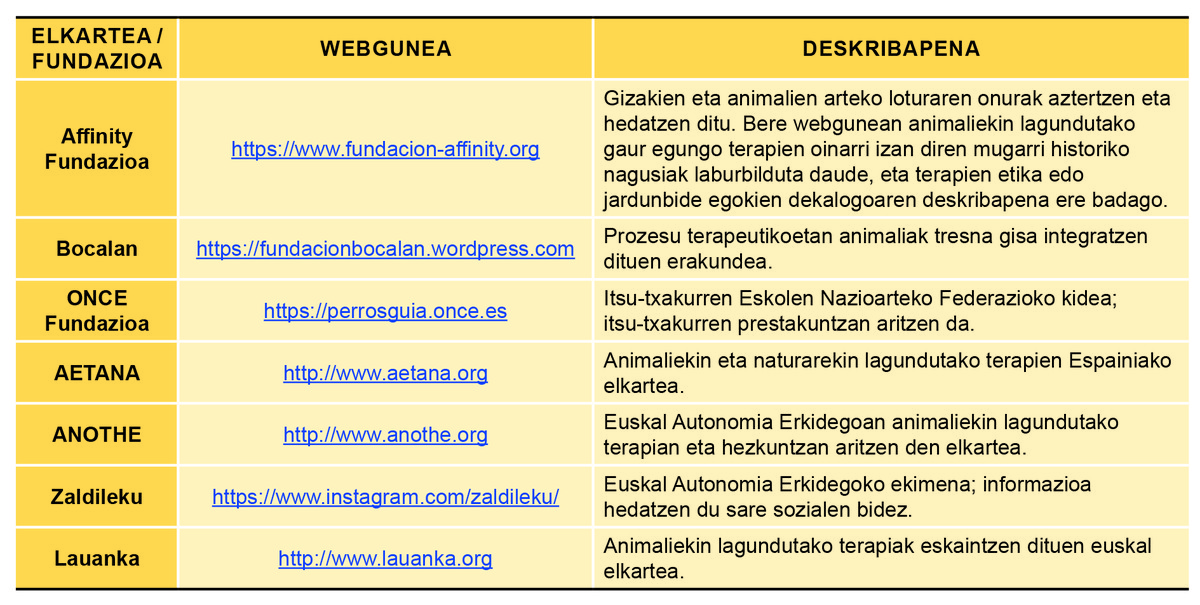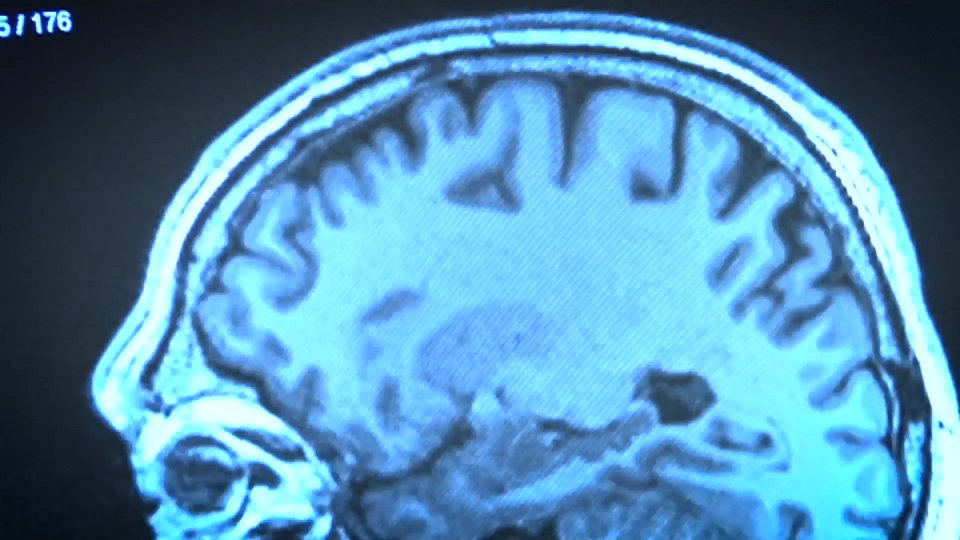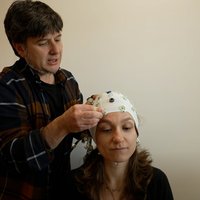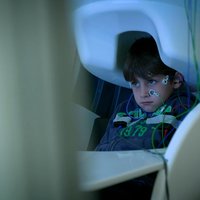Assisted therapy with animals
Animal assisted therapy is of increasing interest because it offers benefits in different population groups. Animals become co-therapists in these therapies, where science still has a lot to investigate.

Humans are a social species. Throughout his life he remains in contact with other human beings and develops a variety of bonds with them; our first affective bond is, in most cases, maternal. These bonds are also common in other social animal species [1], so it is understandable that humans develop affective bonds with beings of other species [2].
There are several theories to explain the effects of human-animal interaction, among which biophilia and the adhesion system predominate. The first says that man has an intrinsic interest in nature and animals, which throughout history has helped him to survive [3,4]. According to the second theory, the connection between humans and animals is based on attachment, since humans have a universal need to create affiliation and affective relationships, even with other species [5,6].
Therefore, the links that humans create with animals as a complement or alternative to traditional therapies can contribute to our well-being, both in terms of prevention and treatment of health problems. In this sense, animal assisted therapy refers to methods that use animals for the prevention and treatment of both physical and psychological human pathologies. During a therapeutic session, the animal acts as an interaction mediator with the individual or group (Table 1).
These therapies are attracting increasing interest in the clinical field. In Spain, which began to expand in the 1980s, there are currently several associations and foundations both nationally and in the Basque Country (Table 2).

table No. 2 The main associations and foundations of the Basque Country and of the Autonomous Community dedicated to animal assisted therapies.
Animals as (ko)therapists
Animals for therapy are specially selected and trained animals with specific skills and abilities. Among the skills, it is worth highlighting the calm, the balance and the tendency to approach people. In contrast, skills include maintaining motivation, being able to work in special environments, and responding appropriately to patients’ unexpected reactions[7].
In the selection of the animal, its well-being is a priority, which is why this selection involves the participation of ethologists and veterinarians who carefully study the compatibility between patients and animals. The patient(s) and the animal(s) must be carefully paired and the intrinsic characteristics of the animals must be in tune with the problems to be treated in the patient[8].
In terms of species, dogs are the most commonly used. This animal species has valuable intrinsic behavioral characteristics: on the one hand, they are spontaneous and open to interaction; on the other hand, they offer unconditional love and are loyal and affectionate. These characteristics allow the creation of a trusted therapeutic space where the therapeutic alliance is strengthened and a safe relationship between patient and therapist is promoted, which is essential for the quality of the therapy process [9].
Benefits of Animal Assisted Therapies
Several studies have reported that animal assisted therapies have achieved a wide range of physical, psychological and social benefits.
The physical benefits
Animal assisted therapy helps improve coordination, reflexes, mobility, and musculature, and offers significant benefits to people with physical or sensory disabilities. The animals offer practical support (opening doors, lifting objects, pushing wheelchairs), in addition to facilitating mobility, socialization and autonomy. All this improves stress management, feeling of safety and self-esteem [10,11]. It has also been shown to have physiological benefits, including an improvement in blood pressure and cholesterol levels, as well as an improvement in the neurochemistry of stress due to a reduction in noradrenaline and cortisol levels [12,13].
The psychological benefits
Animals promote empathy, motivation and self-regulation, and patients, due to their identification with animals, show greater involvement with therapy. In the emotional field, animal assisted therapy provides emotional security. Studies have shown that these therapies are beneficial in improving the symptoms of psychological disorders (e.g., depression, phobias, and behavioral disorders) [14–17].
In the cognitive area, animals improve attention and concentration, as well as self-esteem and self-confidence. Positive effects have been observed in people with attention disorders, as well as in children with learning difficulties or cognitive deficits. Improvements have also been observed in older adults with dementia [18–21].
The social benefits
Animal visits to geriatricians, hospitals and prisons increase the socialization of residents and improve their mood and relationships, both among patients and in the case of therapists, families and work groups. These interactions decrease loneliness and social isolation, and promote entertainment and positive behaviors. In children and adolescents, animals improve communication, moral judgment and social skills; in children with autism, it has been observed that disruptive behaviors are reduced and social skills are increased, and their quality of life is significantly improved [22–26].
Working with animals can involve certain risks, such as allergies, infections, or restrictions on access to certain places (e.g., hospitals). However, the scientific literature indicates that the benefits outweigh the risks, and in addition, the risks can be minimized by applying appropriate hygiene protocols. Other problems may include grief caused by the loss of the pet, especially in the elderly, or the inability of the patient to continue to care for the animal due to the disease.
As described, animal-assisted therapies offer benefits in the physical, psychological, and social fields, and can be particularly helpful for people suffering from disabilities, emotional disorders, or loneliness. When animals are properly selected and prepared for therapy, these interactions are safe, effective, and promote overall well-being. However, despite promising results, more rigorous and methodologically sound scientific research is still needed to better understand the effectiveness and limitations of these therapies and to be able to integrate them more broadly into health care systems.
THE BIBLIOGRAPHY
[1] Safrany, K. I'm talking about A., I'm talking about Len, A. Oh, that's right. 2005. “Vehicle and Psychologic Development: The Importance of Early Relationships.” Revista Digital Universitaria, 6, 2–15.
[2] Gutierrez, G., The Granados, D., Assisted by Piar, N. 2007. “Human-animal interactions: characteristics and applications for human welfare.” Colombian Journal of Psychology, 16, 163–184.
[3] Wilson, O. 1984. [The biophilia]. The Harvard University Press.
[4] Serpell, J. 1996. In the Company of Animals: A study of human-animal relationships. The Cambridge University Press.
[5] Bretherton, I. 1985. “The Attachment Theory: Retrospect and Prospect”. Monographs of the Society for Research in Child Development, 50, 3.
[6] Cassidy, J., Assisted by Shaver, P. I'm talking about R. 1999. Pictures of Handbook of Attachment: Theory, Research, and Clinical Applications. The Guilford Press.
[7] Glenk, L. M. 2025. “Trends in Animal Welfare Research in Animal-Assisted Interventions”. Handbook on Animal-Assisted Therapy 235–248.
[8] Fatjó, J., House in Manteca, X. 2003. Manual of Dog and Cat Education and Management for Assisted Animal Therapy Programs. Foundation Affinity, Sant Cugat Del Vallès.
[9] Szewczyk, D., In Fiega, J., More places to stay in Michalska, M., In Żuren, U., The Lubaszka, Z., In Sikorska, E. 2023. “Therapeutic Role of Animals: A Comprehensive Literature Review on the Prevalent Forms and Species in Animal-Assisted Interventions. Journal of Education, Health and Sport, 45, 215–235.
[10] Bert, F., Organized by Gualano, M. I'm talking about R., To Camussi, E., I'm talking about Pieve, G., I'm talking about Voglino, G., Assisted by Siliquini, R. 2016. “Animal assisted intervention: A systematic review of benefits and risks”. European Journal of Integrative Medicine, 8, 695–706.
[11] By Rodrigo-Claverol, M., I am interested in Malla-Clua, B., Images from Marquilles-Bonet, C., The Sun, J., Assisted by Jové-Naval, J., I am interested in Sole Pujol, M., Assisted by Ortega-Bravo, M. 2020. “Animal-Assisted Therapy Improves Communication and Mobility among Institutionalized People with Cognitive Impairment.” International Journal of Environmental Research and Public Health, 17, 5899.
[12] Williams, C. I'm talking about L., In Dagnan, E., In Miner, K. More about M., I'm talking about Sells, P., Assisted by Williams, C. I'm talking about L., In Dagnan, E., In Miner, K. More about M., According to Sells, P. 2018. “The Effect of an Animal-Assisted Intervention on Physiological Measures of Stress and Anxiety in Graduate Professional Physical Therapy Students”. Open Access Library Journal, 5, 1–16.
[13] Chute, A., Assisted by Vihos, J., Assisted by Johnston, S., The Bureau, K., Other works by Velupillai, N. 2023. “The effect of animal-assisted intervention on undergraduate students’ perception of momentary stress”. Frontiers in Psychology, 14, 1253104.
[14] Arsovski, D. 2024. “The Role of Animal Assisted Therapy in the Rehabilitation of Mental Health Disorders: A Systematic Literature Review”. Perspectives on Integrative Medicine, 3, 142–151.
[15] Pandey, R. According to P., In Himanshu, Gunjan, Mukherjee, R., Located in Chang, C.-M. 2024. “The Role of Animal-Assisted Therapy in Enhancing Patients’ Well-Being: Systematic Study of the Qualitative and Quantitative Evidence.” Jmirx med, 5, e51787.
[16] Rodríguez-Martínez, M. D. According to C., The master, A. D. The P., By Armenta-Peinado, J. I'm talking about A., House in Barbancho, M. Á., By García-Casares, N. 2021. “Evidence of animal-assisted therapy in neurological diseases in adults: A systematic review”. International Journal of Environmental Research and Public Health, 18, DOI: 10.3390/ijerph182412882.
[17] Huber, A., According to Klug, S. More about J., I'm talking about Abraham, A., I'm talking about Westenberg, E., More places to stay in Schmidt, V., More information about Winkler, A. I'm talking about S. 2024. “Animal-Assisted Interventions Improve Mental, But Not Cognitive or Physiological Health Outcomes of Higher Education Students: a Systematic Review and Meta-analysis.” International Journal of Mental Health and Addiction, 22, 1597–1628.
[18] Mills, D., In Hall, S. 2014. “Animal‐assisted interventions: making better use of the human‐animal bond”. Veterinary Record, 174, 269–273.
[19] Perkins, B. L. 2018. “A Pilot Study Assessing the Effectiveness of Equine-Assisted Learning with.” Journal of Creativity in Mental Health, 13, 298–305.
[20] Gee, N. I'm talking about R., Assisted by Griffin, J. A., mccardle, p. 2017. “Human–Animal Interaction Research in School Settings: Current Knowledge and Future Directions”. AAC Open, 3, 233285841772434.
[21] Folch, A., More places to stay in Torrente, M., We're talking about Heredia, L., Assisted by Vicens, P. 2016. “Preliminary Study of the Effectiveness of Assisted Therapy with Dogs in Third Age Individuals.” Revista Española de Geriatrics y Gerontologia, 51, 210–216.
[22] Sahebalzamani, M., Rezaei, O., In Moghadam, L. I'm talking about F. 2020. “Animal-assisted therapy on happiness and life quality of chronic psychiatric patients living in psychiatric residential care homes: a randomized controlled study”. BMC Psychiatry, 20, DOI: 10.1186/s12888-020-02980-8.
[23] Ang, C. It's from S., macdougall, F. I'm talking about A. 2022. "An Evaluation of Animal Assisted Therapy for Autism Spectrum Disorders: Therapist and Parent Perspectives”. Psychological Studies, 67, 72.
[24] Ávila-Álvarez, A., I am interested in Alonso-Bidegain, M., I am interested in De-Rosende-Celeiro, I am interested in Vizcaíno-Cela, M., I am interested in Larrañeta-Alcalde, L., According to Torres-Tobío, G. 2020. “Improving social participation of children with autism spectrum disorder: Pilot testing of an early animal-assisted intervention in Spain”. Health and Social Care in the Community, 28, 1220–1229.
[25] Beavers, A., We're talking about Fleming, A., By Shahidullah, J. D. 2023. "Animal-assisted therapies for autism". Current problems in pediatric and adolescent health care, 53, DOI: 10.1016/J.CPPEDS.2023.101478.
[26] Declercq, I. According to J. According to N., Assisted by Leontjevas, R., Organized by Enders - Slegers, M. More about J., I'm talking about Molog, M., In Gerrits, D. I'm talking about L., More information about Hediger, K. 2024. “Developing a research agenda on nature-based and Animal-assisted Intervention Strategies (NATAIS) in people with neurodegenerative diseases with a specific focus on social isolation and loneliness: a group concept mapping procedure”. BMC geriatrics, 24, 795.
Buletina
Bidali zure helbide elektronikoa eta jaso asteroko buletina zure sarrera-ontzian












